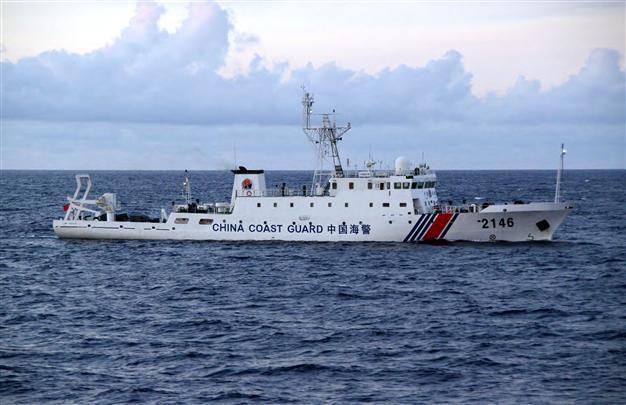China-Japan views worst in ‘almost a decade’: Poll
BEIJING - Agence France-Presse

This handout picture taken and released by the Japan Coast Guard on August 8, 2013 shows a Chinese Coast Guard ship cruising near the disputed islets known as the Senkaku islands in Japan and Diaoyu islands in China, in the East China Sea. AFP Photo
Chinese and Japanese people hold the least favorable views of each others’ countries for almost a decade, a survey found Thursday as military and diplomatic tensions mount between the Asian giants.A total of 92.8 percent of Japanese people have a bad or relatively bad impression of China, while 90.1 percent of Chinese have similar feelings towards Japan, according to the poll by the state-run China Daily and Japanese think-tank Genron NPO. Relations between Beijing and Tokyo have plunged in the last year, largely because of a territorial row over islets in the East China Sea.
It was the ninth time the annual survey has been carried out, and the China Daily said the results were “the worst in almost a decade”.
“They are even worse than in 2005, when Japan’s then Prime Minister Junichiro Koizumi repeatedly visited the Yasukuni Shrine honouring Japan’s war dead, including war criminals from World War II,” it added.
The two countries’ relationship remains soured by Japan’s brutal occupation of China before and during World War II.
Beijing regularly accuses Tokyo of failing to atone for its imperialist past, while Japan says its neighbors use history as a diplomatic stick to beat it with.
The current biggest flashpoint is a group of islands in the East China Sea controlled by Japan, which calls them Senkaku, but claimed by Beijing, which knows them as Diaoyu.
Tokyo summoned yesterday Beijing’s envoy after Chinese government ships entered Japanese territorial waters near the islands, the longest incursion since the simmering dispute erupted again last year when Tokyo nationalized some of them, sparking protests across China.
“The biggest reason for the negative attitude is the Diaoyu Islands, with 53.2 percent of ordinary Japanese choosing it in the multiple-choice question,” the China Daily said.
“The number of Chinese dissatisfied over the issue has nearly doubled, from 39.8 percent last year to 77.6 percent this year.” More than a third of Chinese said “there will be military conflict in the future”, the paper said, but nearly half of the Japanese surveyed did not expect a maritime conflict.
Earlier this week, Japan unveiled its biggest warship since World War II, a $1.2 billion helicopter carrier named Izumo.
China accused its neighbor of “constant” military expansion, and a strongly-worded commentary by the official news agency Xinhua late Aug. 7 labeled it a “flagrant evocation of (Japan’s) past militarism.”
It also accused Prime Minister Shinzo Abe of striking an “increasingly dangerous” pose in attempting to upgrade Japan’s self-defense forces into a full-fledged military, a move that would overhaul the pacifist constitution imposed on the country by the United States and its allies in 1947.
“The facts are clear: from Shinzo Abe’s hint at rejecting the historical conclusions regarding Japan’s war of invasion to his open proposal to change the constitution, much the same way the Nazis did before, the words and actions of the administration have turned increasingly dangerous and there is no sign of attempts to get back on the correct track,” Xinhua said.
The commentary also urged Japan to “never forget the fate of the previous Izumo”, a World War II vessel which was “destroyed by US forces on July 24, 1945 and buried for good with Japanese fascism”.
Japan’s well-funded and well-equipped military is referred to as the Self-Defense Forces, and is barred from taking aggressive action. Any move to beef up the military would require constitutional change.
The survey covered more than 4,000 people in the two countries, in “all sections of society”, the China Daily said.
















